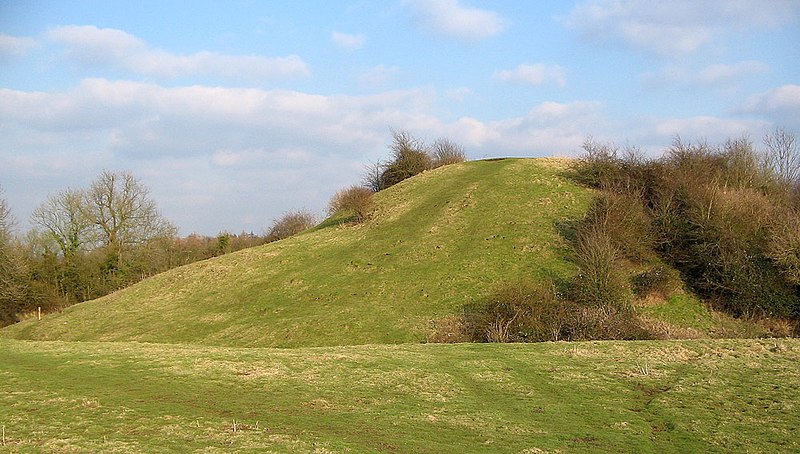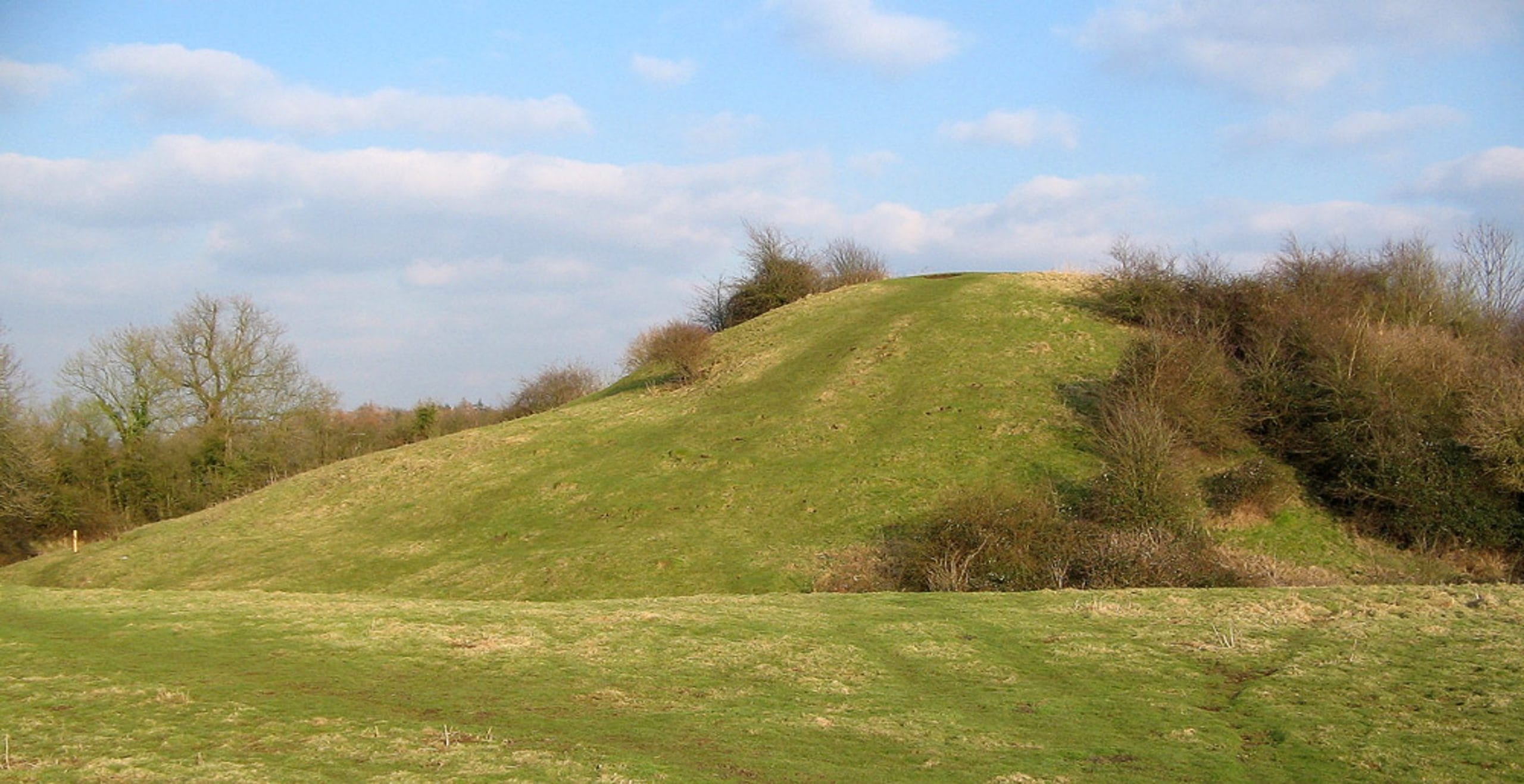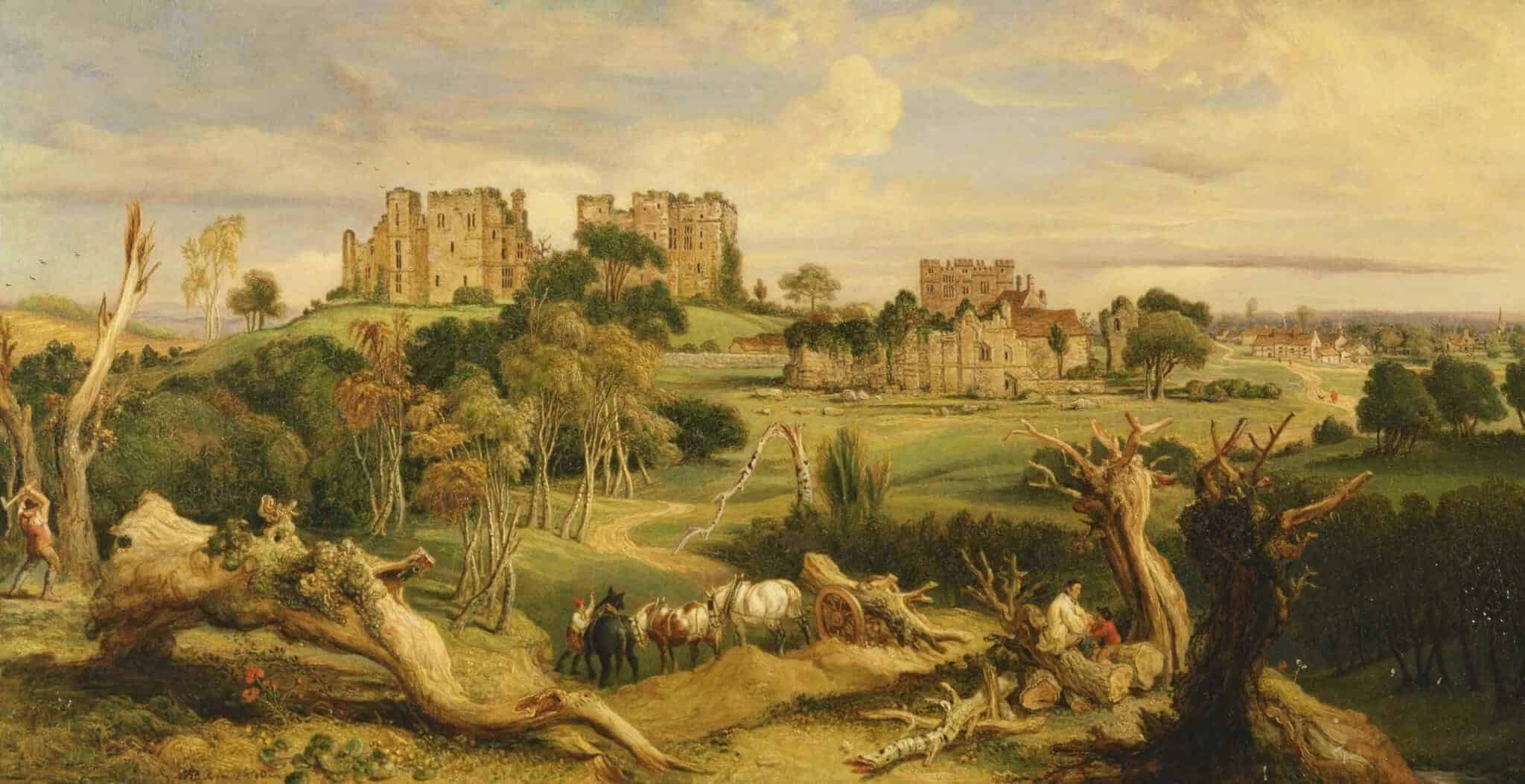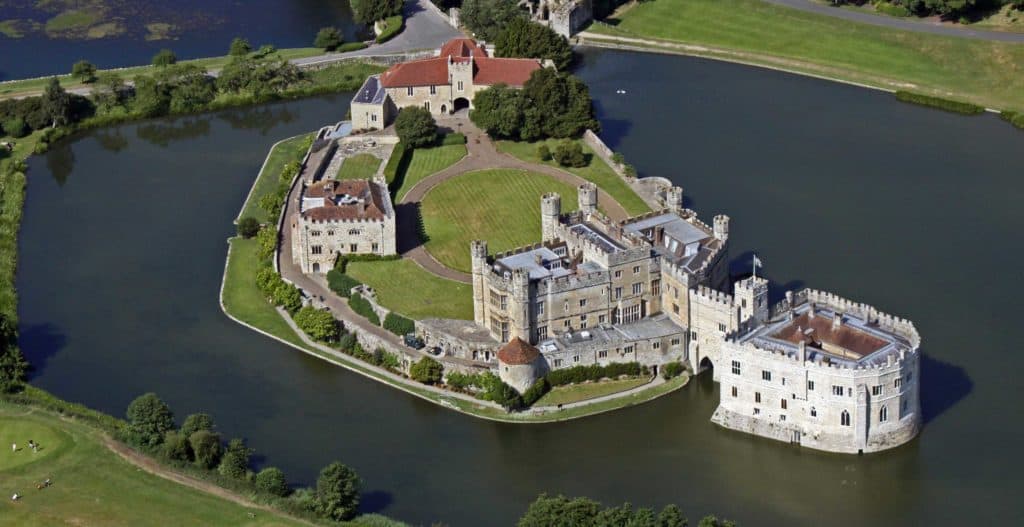Address: Brinklow, Rugby, Warwickshire, CV23 0LR.
Opening times: Declared a Scheduled Ancient Monument and open year-round, free of charge to visitors. Located behind St. John the Baptist’s Church and accessed via a footpath.
The extensive earthworks of a grand 11th century Norman motte and bailey castle can be found in the village of Brinklow in Warwickshire. Possibly on the site of an earlier prehistoric barrow, it sits directly on the line of the Roman Fosse Way, almost equidistant between the major castles and strategic centres of Warwick and Leicester.

A distinctive cone-shaped mound is the dominant feature of the site, which was probably chosen for its command of the Fosse Way. This way was still a strategic route in medieval times. Known locally as “the Tump”, the motte has a flat top and is 15m (45 feet) high. The rest of the castle foundation consisted of a double bailey extending originally to 121m wide by 152m long, and later reduced in size. It has been suggested that Brinklow Castle was built in 1069 as part of William the Conqueror’s northern campaigns. Other structures as well as the barrow may have preceded it, including a Roman signal station.
Although clearly of strategic importance for a time, Brinklow was never rebuilt in stone and appears to have fallen into disuse fairly quickly. What remains provides a valuable insight into the various stages of development of the site. From the top of the motte, the two baileys with their surrounding bank and ditch can clearly be seen, as can the causeways between the baileys and the outer bank and ditch. The 15th century stone church near the entrance to the castle may have had a Norman precursor in timber.
Published 29th April 2020





